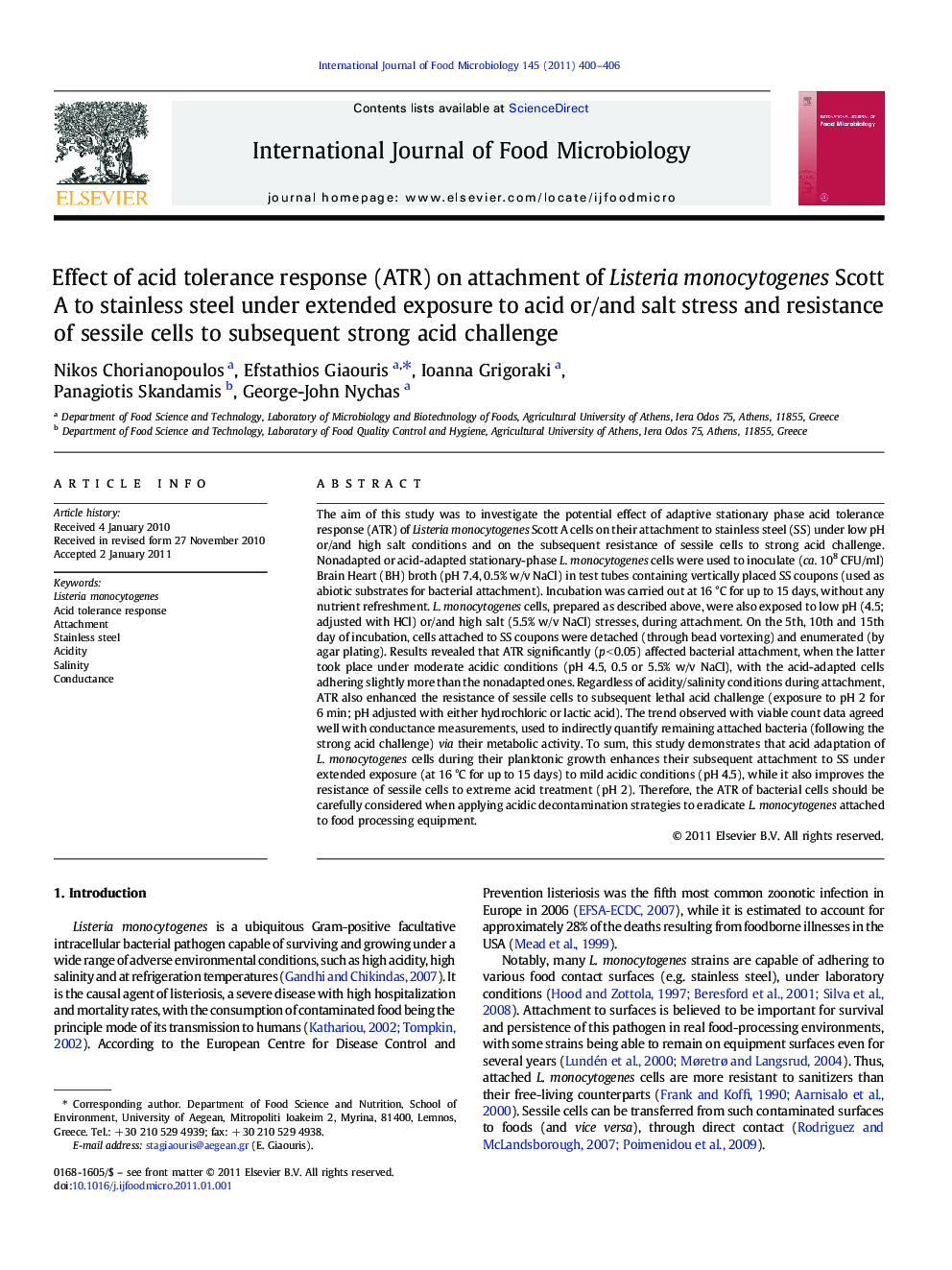| کد مقاله | کد نشریه | سال انتشار | مقاله انگلیسی | نسخه تمام متن |
|---|---|---|---|---|
| 4368041 | 1616673 | 2011 | 7 صفحه PDF | دانلود رایگان |

The aim of this study was to investigate the potential effect of adaptive stationary phase acid tolerance response (ATR) of Listeria monocytogenes Scott A cells on their attachment to stainless steel (SS) under low pH or/and high salt conditions and on the subsequent resistance of sessile cells to strong acid challenge. Nonadapted or acid-adapted stationary-phase L. monocytogenes cells were used to inoculate (ca. 108 CFU/ml) Brain Heart (BH) broth (pH 7.4, 0.5% w/v NaCl) in test tubes containing vertically placed SS coupons (used as abiotic substrates for bacterial attachment). Incubation was carried out at 16 °C for up to 15 days, without any nutrient refreshment. L. monocytogenes cells, prepared as described above, were also exposed to low pH (4.5; adjusted with HCl) or/and high salt (5.5% w/v NaCl) stresses, during attachment. On the 5th, 10th and 15th day of incubation, cells attached to SS coupons were detached (through bead vortexing) and enumerated (by agar plating). Results revealed that ATR significantly (p < 0.05) affected bacterial attachment, when the latter took place under moderate acidic conditions (pH 4.5, 0.5 or 5.5% w/v NaCl), with the acid-adapted cells adhering slightly more than the nonadapted ones. Regardless of acidity/salinity conditions during attachment, ATR also enhanced the resistance of sessile cells to subsequent lethal acid challenge (exposure to pH 2 for 6 min; pH adjusted with either hydrochloric or lactic acid). The trend observed with viable count data agreed well with conductance measurements, used to indirectly quantify remaining attached bacteria (following the strong acid challenge) via their metabolic activity. To sum, this study demonstrates that acid adaptation of L. monocytogenes cells during their planktonic growth enhances their subsequent attachment to SS under extended exposure (at 16 °C for up to 15 days) to mild acidic conditions (pH 4.5), while it also improves the resistance of sessile cells to extreme acid treatment (pH 2). Therefore, the ATR of bacterial cells should be carefully considered when applying acidic decontamination strategies to eradicate L. monocytogenes attached to food processing equipment.
Research Highlights
► ATR of L. monocytogenes improves its attachment to SS under mild acidic conditions.
► Sessile L. monocytogenes cells are more resistant to strong acid once acid-adapted.
► Stress hardening should be considered when antimicrobial treatments are applied.
Journal: International Journal of Food Microbiology - Volume 145, Issues 2–3, 28 February 2011, Pages 400–406